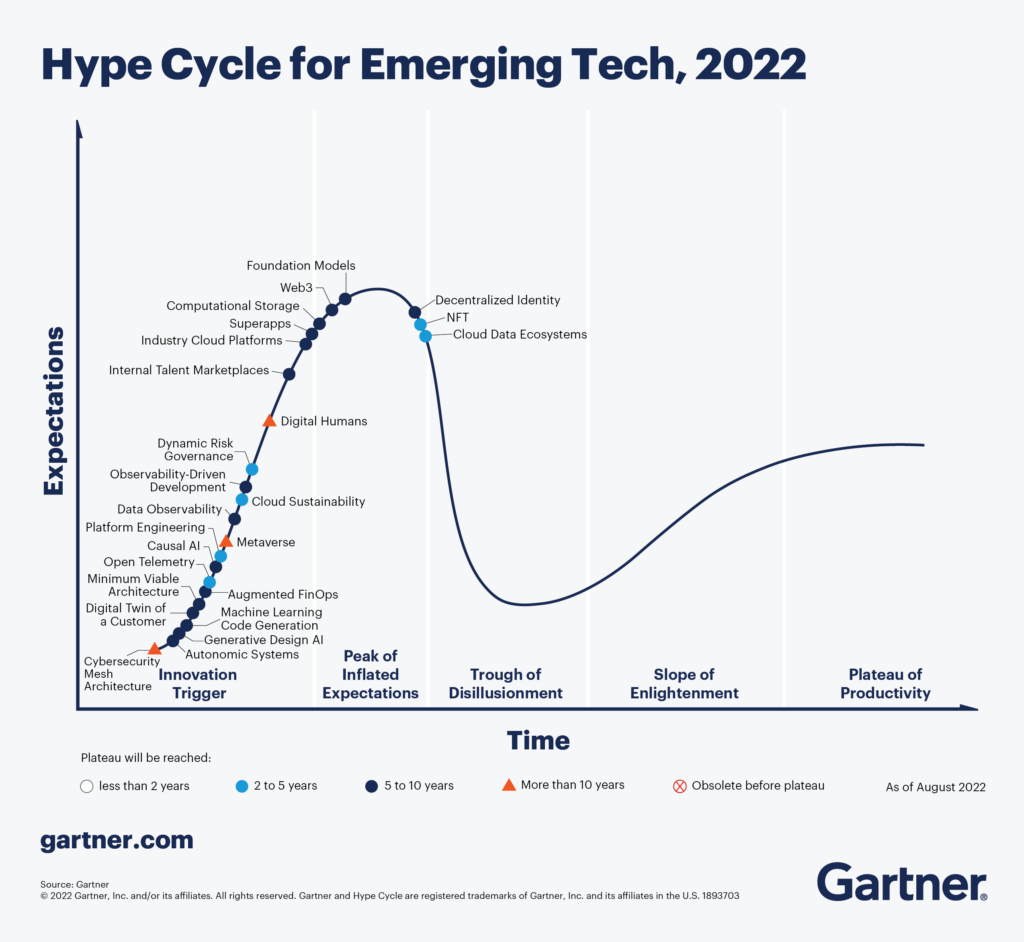Ready for another 2023 trends report?
…me either.
There are more reports than you could hope for, filled with claims of the next best thing that serve only to distract rather than support. I am all for keeping up with what’s going on in the marketing world. It moves quickly, and frankly, there’s no other option. But I’m a big believer in the fundamentals. In what has been proven, in what lays the foundation for all that’s to come.
So, rather than pretend I’m a genie with an exclusive view on the future, I won’t do a classic ‘Marketing trends of 2023’. Rather, here’s what I’m making space for, and what I think start-ups should have on their radar. Equally important, however, is what remains true, good and worthwhile – the fundamentals that aren’t going anywhere.
So whether you’re all in with a juice cleanse this January or clutching your coffee like the lifeline that it is, I get you.
Here are the trends or really, ‘considerations’ that I deserve some thought and consideration:
AI will change how we develop content
AI in marketing is only just beginning. I say this cautiously, as it’s so easy to get on the bandwagon of every new marketing/tech development. But really, this is one to pay attention to. Brands have already started – from Nestle, to Heinz, The New York Times and more, they’re incorporating AI into their development process. Even Ryan Reynolds, who has used it for recent Mint Mobile campaigns, is ‘mildly terrified’ by it.
There’s certainly a lot of hype, so I anticipate it all to go through the usual life cycle. Gartner’s Hype Cycle for Emerging Tech shows the trajectory (despite wrongly assuming that each new technology will be successful).

All this to say, AI cannot be ignored in the marketing space. ChatGPT has been the latest, so much so that it took centre stage, projected on a big screen at several of my family Christmases. It’s somewhat eery and effective functionality both bewildered and impressed. If you haven’t come across it yet, it’s essentially a content generator, able to churn out customised copy in seconds. Name the topic, the length and (nearly) any considerations you’d like, and out it will come. You can have it write a poem, a blog post, your social copy. The options are endless. And it’s not exactly a secret. I tried to log back in today and it’s currently at capacity… it’s popularity adding a little scarcity for good measure.
In any case, whether ChatGPT or the likes, we need to be thinking about how AI will impact us as consumers but also as creators/marketers. Could it be used to increase efficiency? How do we maintain authenticity? How do we make it work for us and with us? From giving us a working base for some copy, to developing that particular image we need, to finding the right music track, to designing a logo, AI can expedite many a marketing task. There are many contexts in which it’s not fit for purpose, but we need to embrace the efficiency and opportunity that it does bring.
Beyond ChatGPT, here are some of the AI programmes to watch and test:
- Cleanup Pictures – image editing (remove unwanted distractions)
- Soundraw – music sourcing
- Looka – logo development
- (1) DALL•E | (2) Canva’s ‘Text to image’ – image generation
Social media channels are increasingly used as search engines and customer service hubs
The audience-building capabilities of social media have relied on for years now. Marketing strategies have been driven by this tactic, and while it’s not going away, the way in which customers are using these channels and their expectations of them, are changing. In particular, Gen Z’s are less likely to turn to Google for their search needs. Want vacation recommendations? Recipes? Interview tips? They’re turning to TikTok. We should be thinking through our SEO strategy within social, knowing what our audiences are looking for and how we can provide the answers. As Google’s Julia Hoffmann says, ‘It’s Gen Z’s world – we’re just living in it’. We’re much better off developing content, adapting our ways to those of Gen Z’s, rather than fool-heartedly trying to bring them into ours.
I talk about us millennials as if we’re dinosaurs, but even we have evolved our use of social media. Twitter has forever been a well-used portal for our customer service needs, there right when we need to complain about a flight delay or applaud a positive experience. It’s not stopping there. The comments sections of all social channels should be governed by customer service teams, as much if not more so than community managers.
And here are a few key principles that I keep top of mind when thinking about social:
- While drawing from the same creative territory, content has to be customised to the platform. Gone are the days you can cut-down a TV spot and throw it on YouTube. Create for the channel
- There’s a place for both short- and long-form video content
- The work is not done once you hit ‘post’ – engage in the conversation, use learnings to inform future content, and listen to what your customers are telling you
The rise of small-scale, intimate groups
Customers are human and humans want connection. They want this on a smaller, more intimate scale. But they have to already care. They won’t care about a brand just for brand’s sake. A large-scale brand cannot fabricate this kind of interest or engagement just because. I think this is a particular opportunity for start-ups wanting to engage the early adopters, infusing some pride and excitement that is built around the values of a brand, not the product itself. It has to be done carefully – Slack groups are a dime a dozen – but deployed tactfully and with the right audience, I think this style of engagement will only grow.
Through all this, the fundamentals stay the same
And through all of this, there is so much that stays the same. The necessity of strategy? Still there. You still need to research the market. Still segment your customers. Craft the messages. Target accordingly. Design the customer journey that brings the right message to your customers at the right time. Keep choosing the channels that are best aligned to your audience and your goals.
All of these trends and considerations for the year ahead, as flashy and exciting as they are, are only as good as the foundation on which it’s laid. Healthy levels of both skepticism and curiosity are required, all within the context and framework that you set through your strategy.
P.S. the top image in this blog post was not generated by AI – neither DALL•E nor Canva were up to the task! There’s necessary room for improvement and in the meantime, Unsplash still reigns!

+ show Comments
- Hide Comments
COMMENT